2013.03.08
Stand-offs in Senkakus costly to JSDF, JCG
The Japan Air Self Defense Forces, Maritime Self Defense Forces and the Japan Coast Guard are all becoming weary of the non-stop patrols and challenges required to keep the Chinese at bay in the Senkaku islets region of southwestern Okinawa Prefecture.
The constant patrols of the nation’s territorial waters and the airspace over the East China Sea are taking a toll on the military forces and the Japan Coast Guard, which are having to remain vigilant at all times as Chinese surveillance and military aircraft, as well as ships, want to intrude into or near Japanese waters. “The situation has started to be like playing chicken. The Chinese are waiting for the Japanese side to give up,” is how Tetsuo Kotani describes the situation. Kotani is a fellow at the Japan Institute of International Affairs, a non-profit think tank affiliated with the Japanese Foreign Ministry.
Another expert, a senior fellow at the National Institute for Defense Studies, says Japan’s patrol and defense capabilities are strong enough to repel China’s threat. Masayuki Masuda thinks it will work at least for now, but over the long term he says it will become increasingly difficult to keep Chinese ships away from the islets. Masuda says Beijing’s massive defense budget will be hard to match.
There are five Chinese government organizations –nicknamed the ‘Five Dragons’—operate patrol ships that sail to the Senkakus. The organizations include China’s Coast Guard, the Land and Resources Ministry and the fisheries bureau under the Agriculture Ministry. Those Five Dragons, not counting the Chinese Navy, own some 47 1,000-ton ships. Japan Coast Guard has 51 of comparable size.
China’s making things more difficult as it intensifies the confrontations. Last month Chinese frigates locked weapons-guiding radar onto a MSDF helicopter in the East China Sea. Another Chinese frigate did the same with an MSDF destroyer near the Senkakus.
Japan is preparing to meet the treat with a dozen new 1,000-ton patrol boats and a new helicopter. They’ll be on-line by the end of fiscal 2015. Its 600 personnel will be charged solely with patrolling the Senkakus. The Coast Guard will upgrade many of its 51 ships to increase their maximum speed. There are currently only seven patrol boats from the 11th Regional Coast Guard Headquarters in Naha to keep track of the Chinese vessels.
Defense spending’s been kicked up ¥13.5 billion to operate Air Self Defense Force E-767 and E-2C airborne warning an control system aircraft, and six F-15 fighter interceptors are being upgraded. Advanced radar systems provide Japan a significant advantage over Chinese Air and Navy forces. The ASDF operates E-2C propeller aircraft out of Misawa, and the E-767’s from Mamamatsu in Shizuoka Prefecture. It is thinking stationing ASDF fighter winds in Okinawa’s Sakishima Islands, which include Miyako Island.
Currently, F-15’s scramble from Naha Air Base, 420km from the Senkakus. A Sakishima deployment would cut that travel in half. F-15’s are already on 24-hour alert, ready to launch within minutes. Warning shots have only been fired once, in 1987, when a Soviet aircraft intruded. Since 1967, 36 unauthorized foreign aircraft have entered Japanese territorial airspace.

 2024.07.07
2024.07.07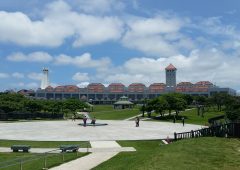 2024.06.21
2024.06.21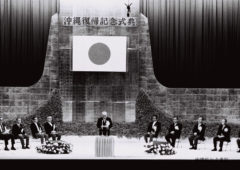 2024.05.15
2024.05.15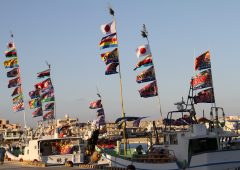 2024.02.07
2024.02.07 2024.01.31
2024.01.31 2023.11.02
2023.11.02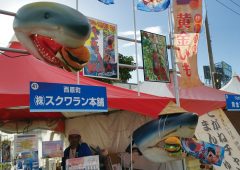 2023.10.26
2023.10.26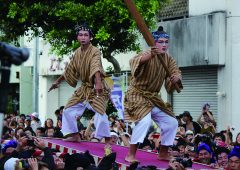 2023.09.29
2023.09.29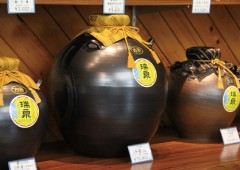 2023.09.01
2023.09.01






